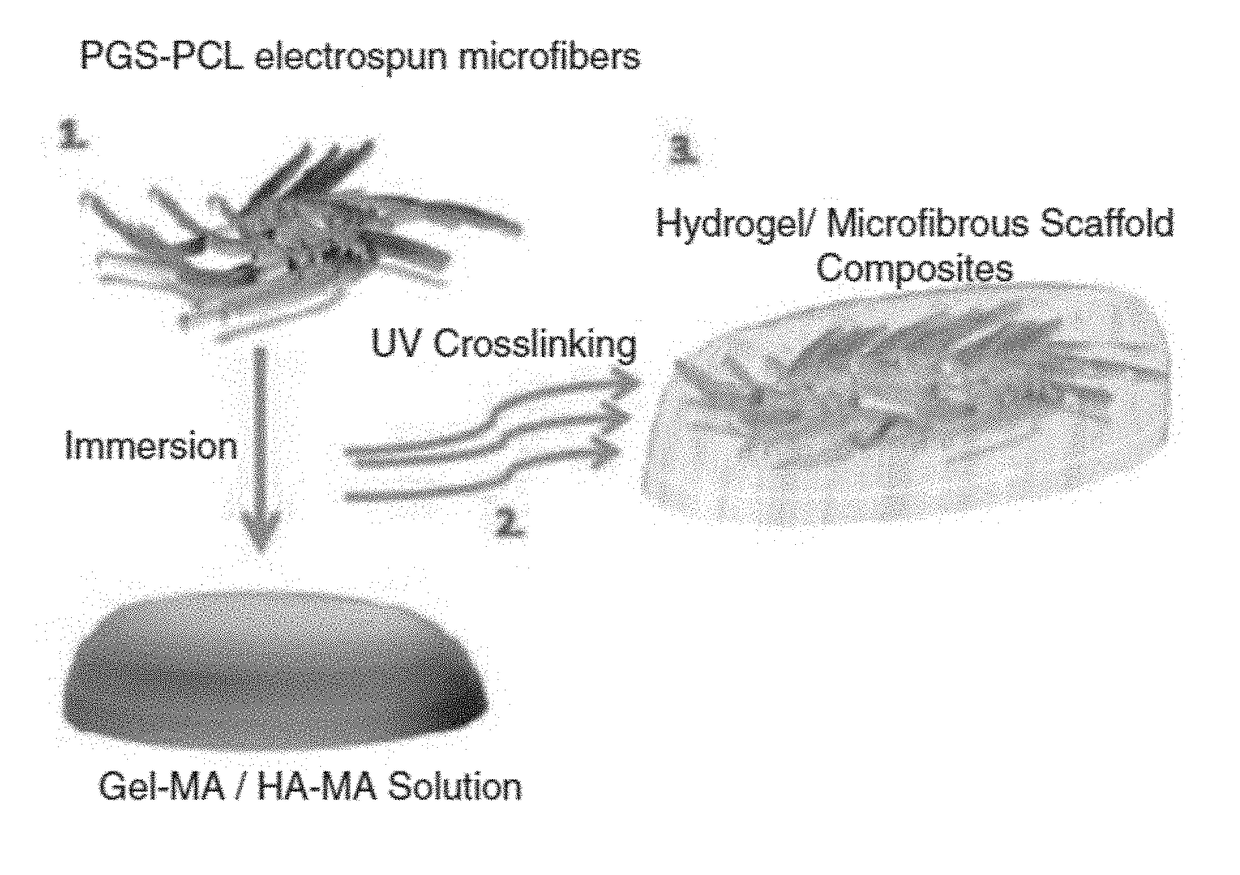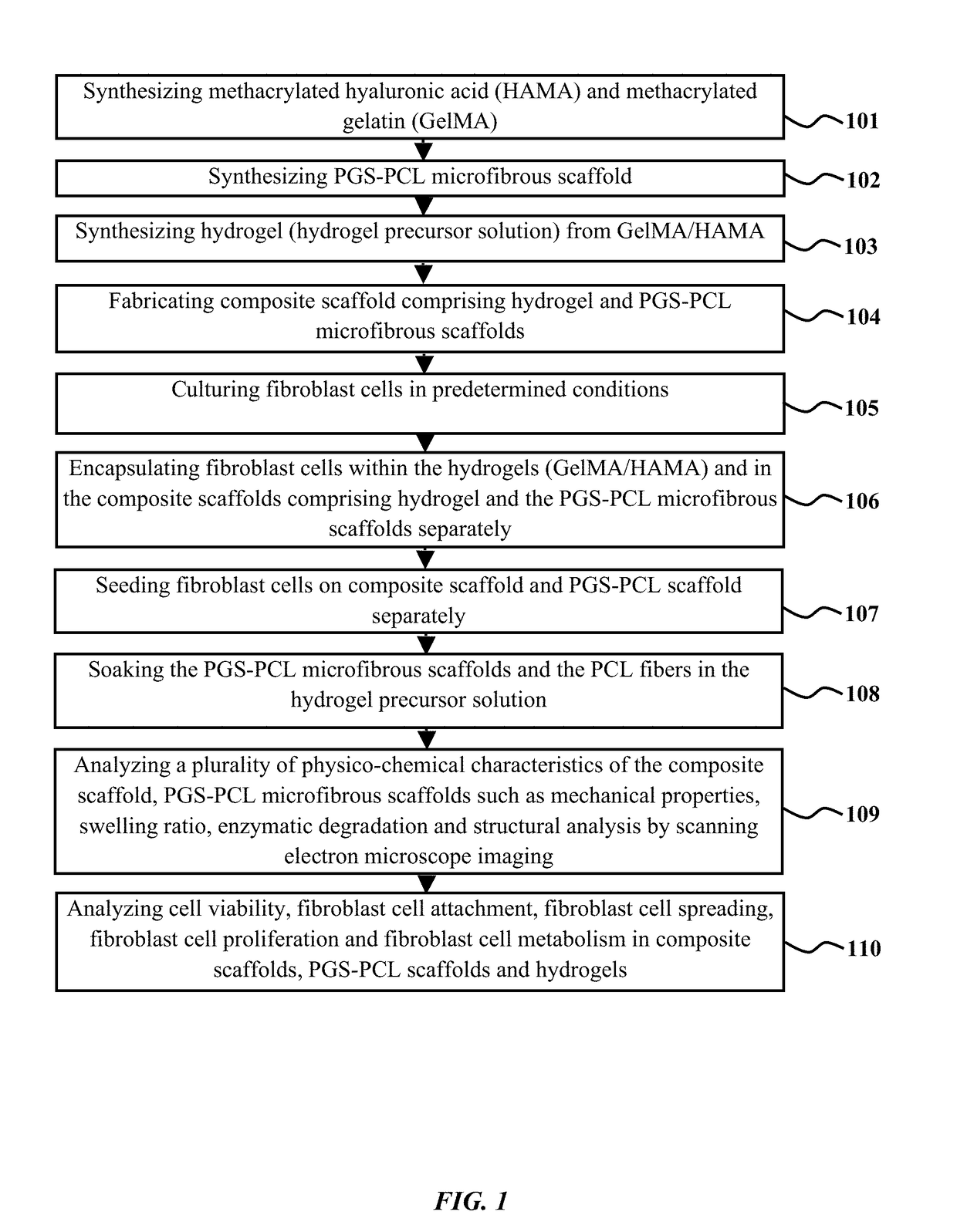Scaffold for skin tissue engineering and a method of synthesizing thereof
- Summary
- Abstract
- Description
- Claims
- Application Information
AI Technical Summary
Benefits of technology
Problems solved by technology
Method used
Image
Examples
Embodiment Construction
[0018]The primary objective of the embodiment herein is to integrate electrospun poly (glycerol sebacate) (PGS)-poly (ε-caprolactone) (PCL microfiber scaffolds, which possess enhanced mechanical properties for skin tissue engineering, within a hybrid hydrogel made from methacrylated hyaluronic acid and methacrylated gelatin.
[0019]Another object of the embodiment herein is to provide a composite biomaterial which combines the properties of extracellular matrix, mimicking hydrogels and elastomers poly (glycerol sebacate)-poly (ε-caprolactone) (PGS-PCL) electrospun (ES) scaffolds to mimic the cellular environment and mechanical properties of the skin tissue.
[0020]Yet another object of the embodiment herein is to provide a hydrogel composite scaffold for retaining cells within the composite structures, while PGS-PCL component provides mechanical strength and a porous structure to support tissue growth.
[0021]Yet another object of the embodiment herein is to utilize extracellular matrix t...
PUM
| Property | Measurement | Unit |
|---|---|---|
| Temperature | aaaaa | aaaaa |
| Temperature | aaaaa | aaaaa |
| Temperature | aaaaa | aaaaa |
Abstract
Description
Claims
Application Information
 Login to View More
Login to View More - R&D
- Intellectual Property
- Life Sciences
- Materials
- Tech Scout
- Unparalleled Data Quality
- Higher Quality Content
- 60% Fewer Hallucinations
Browse by: Latest US Patents, China's latest patents, Technical Efficacy Thesaurus, Application Domain, Technology Topic, Popular Technical Reports.
© 2025 PatSnap. All rights reserved.Legal|Privacy policy|Modern Slavery Act Transparency Statement|Sitemap|About US| Contact US: help@patsnap.com



